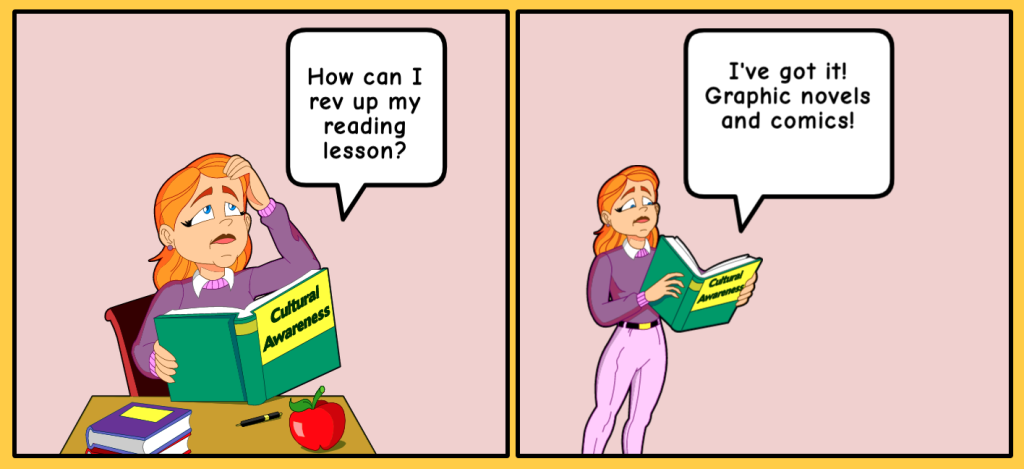It is often said that if you fail to plan, you plan to fail. One of the challenges cited by teachers in the language classroom especially is creating effective lesson plans (Velikaya, 2020).
So, what is an effective lesson plan?
Continue readingIt is often said that if you fail to plan, you plan to fail. One of the challenges cited by teachers in the language classroom especially is creating effective lesson plans (Velikaya, 2020).
So, what is an effective lesson plan?
Continue readingMany educators are now familiar with the black screens and mute students on Zoom and its breakout rooms. While having student cameras turned on can certainly have its own merits, the black screens do not necessarily mean that the students cannot or will not contribute. I have found the following three activities helpful in engaging students regardless of having their cameras on or off.
Continue reading
January is typically a time when people are looking forward – considering new goals and new approaches. In this post, however, I’ve decided to look back. I’m revisiting some of the information I gave in my very first professional development activity for TESL Ontario: a webinar I co-delivered in 2016 entitled Getting Animated: Graphic Novels in the ESL Classroom. My hope is that this blog will encourage readers to find ways to incorporate graphic novels and/or comics into their 2023 teaching practices.
Continue readingWhen we went back to class in March, my students appeared larger than life. More human, tangible. Lots of smiles, welcoming faces, laughter, and excitement. They had a willingness to learn and interact with each other, as well as with the teacher.
I was curious to see how teaching would function in a “post-COVID-19” period. I was happy to see them in class.
I developed a learn-as-you-go approach. I didn’t know who would attend on a day-to-day basis and hoped more students of various backgrounds would join.
Continue readingI often hear students say they like any chance to have a casual conversation in English. Literacy learners, however, are much more likely to avoid a conversation because they’re not confident enough to use the language yet. As ESL teachers, we prepare well-thought-out lessons that focus on grammar, composition, pronunciation, and structured activities, but we rarely foster a free flow of dialogue that encourages the students to just “use the language.”
Continue readingLearning English (or any new language) requires student focus, repetition, and practice, so it’s easy to see why students may often feel disengaged or even bored in the classroom. This is why ESL teachers love to try off-the-wall ways to liven up their classes and infuse some enthusiasm into the topic. Continue reading

In post-secondary, students are often required to work on culminating projects comprised of various assignments submitted at different deadlines throughout the term. My teaching partner and I wanted to bring the experience of a post-secondary culminating project into our classroom, but in a way that was both manageable and meaningful to our LINC students.
When doing major projects, my teaching partner and I are always looking for ways to optimize Portfolio-Based Language Assessment (PBLA) for all four skills (listening, speaking, reading, and writing). As we focus on teaching our students English to prepare them for post-secondary education and the workplace, we find ourselves utilizing creative ways to incorporate PBLA with scaffolded learning. Thus, we came up with the idea of a cereal box book report.
Continue reading
For the last 20 years, TESL Ontario has held technology workshops at the annual conference to introduce and provide conference attendees with the opportunity to learn from the many individuals who utilize technology in the classroom. Over the years, the interest has grown along with the opportunities to use technology from computers to tablets to smart phones. Most of our students have one or several of these devices. The use of these devices Continue reading

This year at the TESL ON conference, Deborah Healey, TESOL International Association, will be one of our Keynote Speakers. The following blog post was written by Deborah. Here she gives you a taste of what she will be sharing at the conference.
Gamification in Education: Hype or Useful Teacher Tool? This is a question that I’ve been asking for the past few years, as I’ve tried gamifying some of my classes. Most teachers (myself included) have long used games in the English language classroom and in teacher training to encourage motivation and add a fun factor to learning. Some teachers have been able to use game-based learning, where a game sets the context for learning. Continue reading
Teaching verbs can be accomplished through a combination of miming, games, worksheets, video clips, discussion, lecture, translation, and perhaps a host of other strategies. Reinforcing the meaning of many verbs by providing a video clip can help with retention. Flashcards can also assist with vocabulary acquisition. Quizlet’s flashcards deliver still images or animated clips online. Animated clips can accelerate acquisition through motion in context. Quizlet’s ability to include animated GIFs makes it a useful tool for language students learning base verbs.